Wildflowers of the Adirondacks:
White Fringed Orchid (Platanthera blephariglottis)
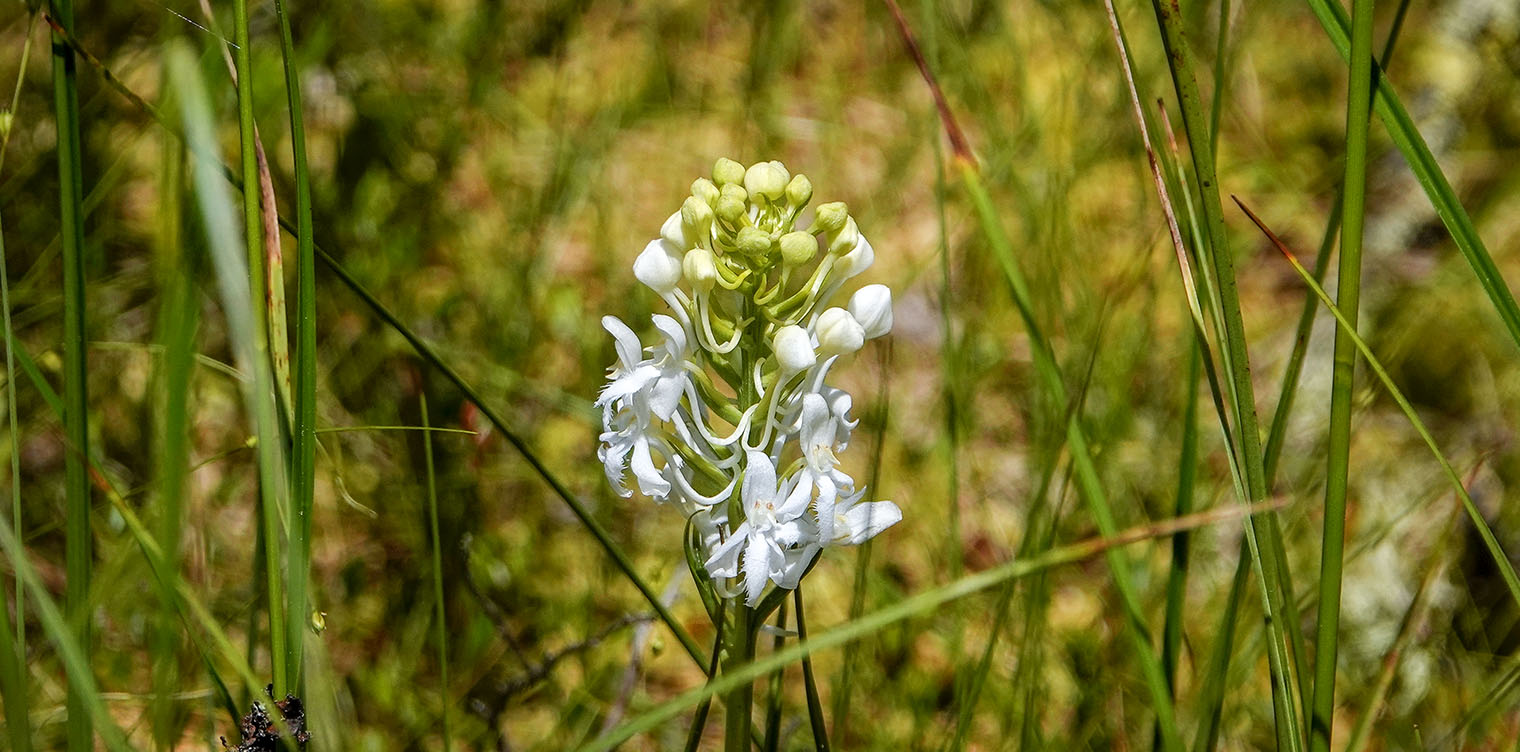
White Fringed Orchid (Platanthera blephariglottis var. blephariglottis) is a native wildflower and member of the orchid family that blooms in July and grows in wetlands in the Adirondack Mountains and other parts of New York State.
White Fringed Orchid is a member of the Orchidaceae (Orchid) Family. This family includes a number of other orchids that are found in the Adirondack Park, including the Pink Lady's Slipper and the Dwarf Rattlesnake Plantain (both found in moist woodlands) and Grass Pink and Rose Pogonia (both found in wetland habitats similar to those where White Fringed Orchids grow).
The White Fringed Orchid is a member of the Platanthera genus, which also includes another bog-dwelling orchid: Little Club-spur Orchid.
- The genus name (Platanthera) is derived from the Greek word platys (meaning wide or broad) and anthera (meaning anther) – a reference to the broad anther (the male portion of the flower containing the pollen) affixed to the top of the columnColumn: In orchids, a unique reproductive organ made up of the combined male and female sexual organs of the flower.. Plants in this genus were once assigned to the Habenaria genus; and most older sources still refer to this genus name.
- The species name (blephariglottis) derives from a combination of two words: blephari (eyebrow or eyelash) and glottis (tongue). This is a reference to the tongue-shaped, heavily fringed lip of the orchid.
The common name (White Fringed Orchid) is another reference to the fringed lip on each small flower. Other common names for this orchid include White Fringed Orchis, White-fringe Orchis, White-fringed Bog-orchid, and Northern White Fringed Orchis.
Identification of White Fringed Orchid
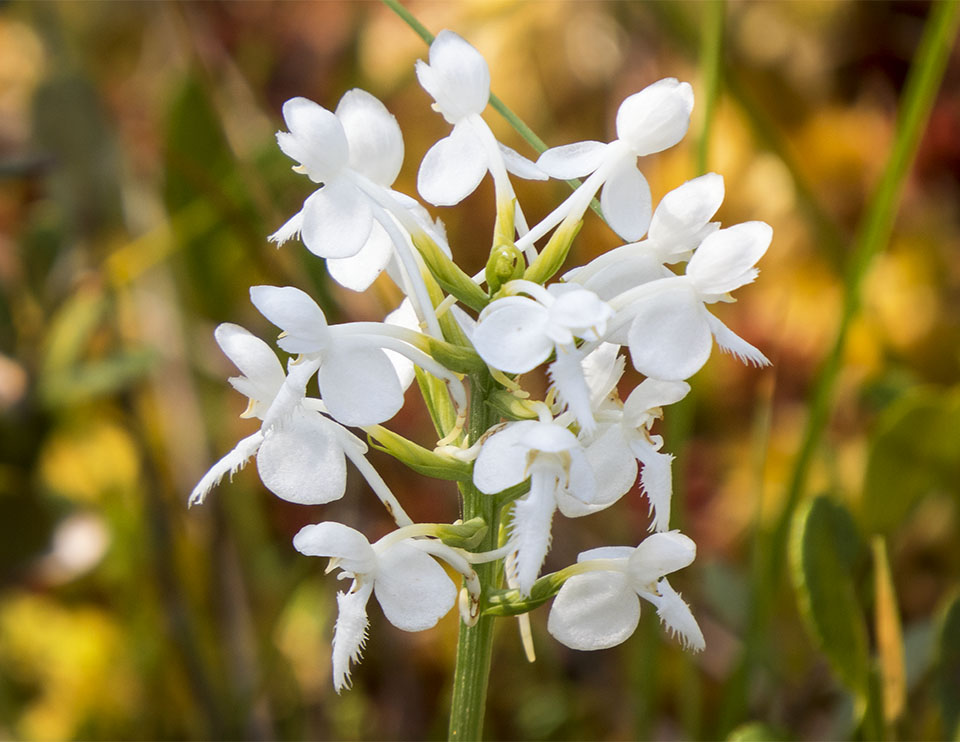
White Fringed Orchids grow between a foot and two feet tall. The stem is smooth and green. The leaves are arranged alternately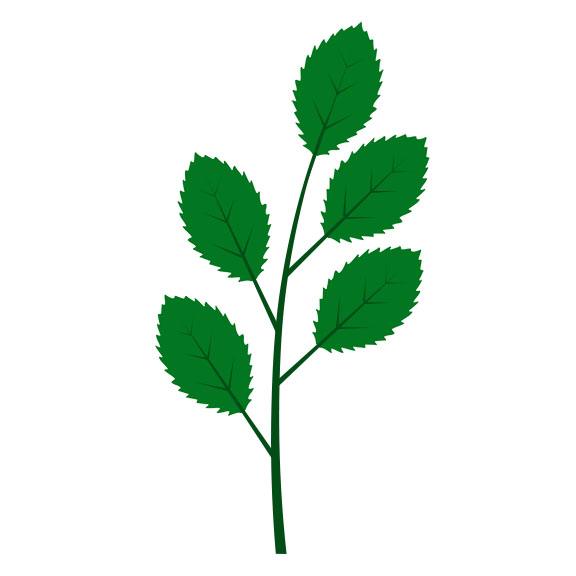 Alternate: An arrangement of leaves (or buds) on a stem (or twig) in which the leaves emerge from the stem one at a time. This often makes the leaves appear to alternate on the stem., meaning there is one leaf per node along the stem. The leaves on the lower part of the stem are lance-shaped
Alternate: An arrangement of leaves (or buds) on a stem (or twig) in which the leaves emerge from the stem one at a time. This often makes the leaves appear to alternate on the stem., meaning there is one leaf per node along the stem. The leaves on the lower part of the stem are lance-shaped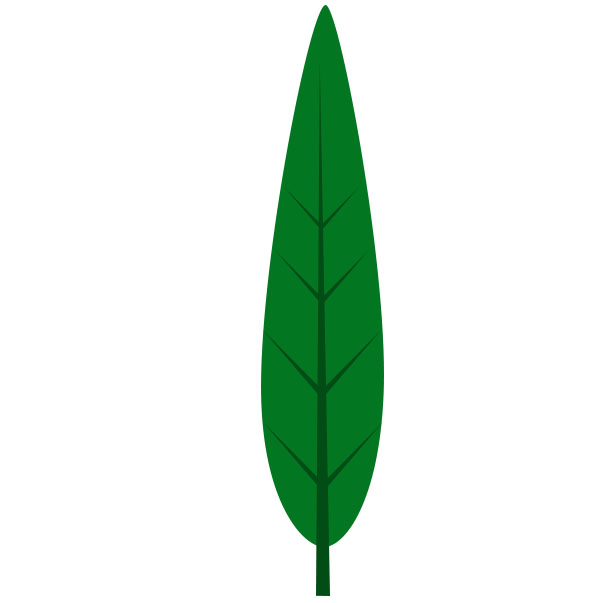 Lanceolate: A leaf shaped like a lance head, tapering to a point at each end., with smooth
Lanceolate: A leaf shaped like a lance head, tapering to a point at each end., with smooth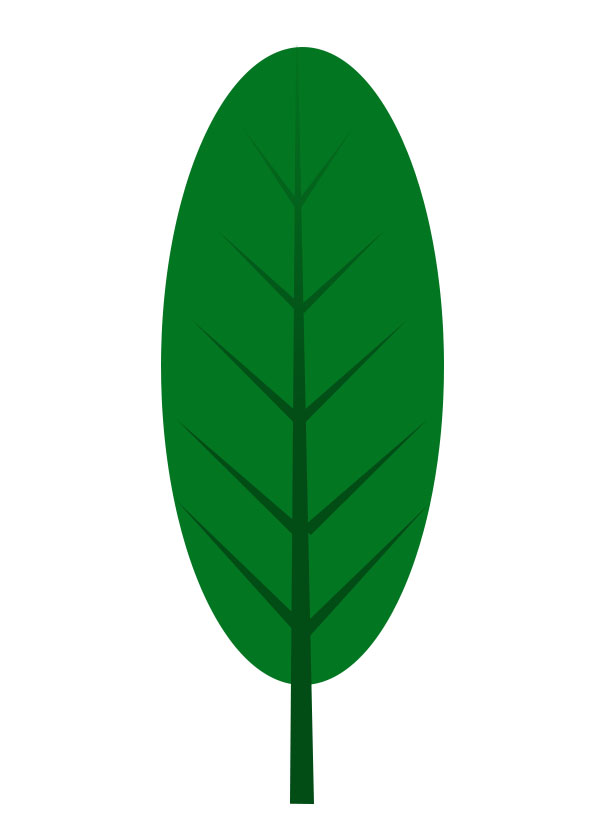 Smooth leaf edges do not have any teeth. (untoothed) edges. The upper leaves are much smaller than those on the lower part of the stem.
Smooth leaf edges do not have any teeth. (untoothed) edges. The upper leaves are much smaller than those on the lower part of the stem.
White Fringed Orchid flowers appear in a showy, compact cluster of ten to twenty flowers at the top of the stem. Each individual flower is white, about ½ inch wide. The labellumLabellum: The central, modified petal of an orchid, also called a lip, usually but not always found in the lowest position on the flower. The labellum serves to attract insects, which pollinate the flower, and acts as a landing platform for them. (lip) is, as the plant's name implies, fringed. The flowers have a slender spur curving below and behind the lip of the orchid.
In the Adirondack Mountains, White Fringed Orchids are generally in flower in July. You can sometimes find them in bloom in very late June. If you go orchid-hunting in early July, you will often see White Fringed Orchids in bud, with a few coming into bloom. Depending on the weather, mid- to late-July is probably the best time to find these orchids in full bloom in our area. The pattern of iNaturalist observations within the Adirondack Park Blue Line suggests that bloom time continues throughout July into early August.
Uses of White Fringed Orchid
No medicinal or edible uses for this plant were found, which is fortunate since these orchids are protected in New York State and should not be harvested in any case.
Wildlife Value of White Fringed Orchid
The nectar of White Fringed Orchids is consumed by a variety of insects.
- Insect pollinators include moths such as Hummingbird Clearwings (Hemaris thysbe).
- A number of butterflies, including the Clouded Sulphur (Colias philodice), Monarch (Danaus plexippus), Atlantis Fritillary (Speyeria atlantis), Cabbage White (Pieris rapae), and Eastern Tiger Swallowtail also visit this orchid in search of nectar.
- Insect visitors to White Fringed Orchids also include bees such as Yellow Bumblebees (Bombus fervidus) and Half-black Bumblebees (Bombus vagans).
Distribution of White Fringed Orchid
White Fringed Orchids are found in the northeastern United States, plus the eastern provinces of Canada. This plant is listed as Endangered in Connecticut and Ohio and Threatened in Florida, Maryland, and Rhode Island.
White Fringed Orchids are found in most counties in the eastern half of New York State, including most counties within the Adirondack Park Blue Line, except Clinton, Washington, Saratoga, Fulton. These orchids are categorized as Exploitably Vulnerable in New York State. This means that this orchid is on a list of native plants likely to become threatened in the near future throughout all or a significant portion of their ranges within the State, if causal factors continue unchecked.
Habitat of White Fringed Orchid
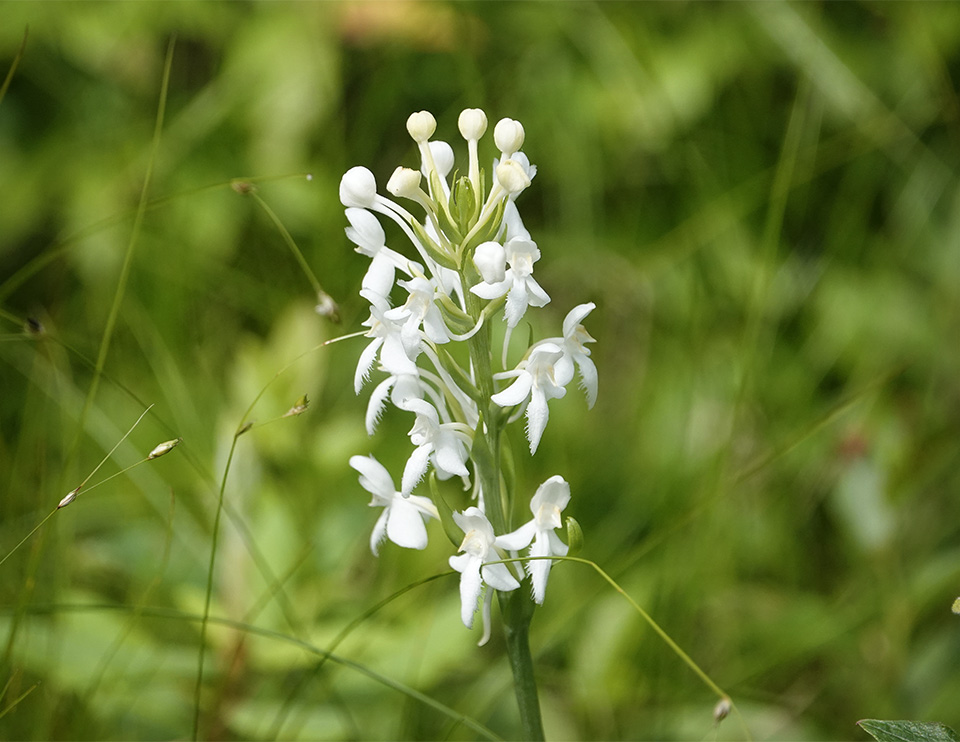
White Fringed Orchids are wetland plants which are found mainly in bogs and peaty open wetlands in sphagnum. Throughout their North American range, they can be seen growing in bogs, fens, marshes, and moist meadows. One source suggests that they flower best a few years after a disturbance such as a fire or hurricane. This orchid occurs in several wetland ecological communities, including Patterned Peatland.
The most convenient place to study White Fringed Orchids in the northeastern part of the Adirondack Park is Barnum Bog at the Paul Smith's College VIC. These orchids may be viewed up close from the Boreal Life Trail boardwalk.
- Look for White Fringed Orchids blooming near three other bog-loving orchids: Rose Pogonia, Little Club-spur Orchid, and Grass Pink. Other bog-dwelling wildflowers include the Pitcher Plant, Buckbean, Cottongrass, and Marsh Cinquefoil.
- The only trees that can survive in this nutrient-poor environment are Tamaracks and Black Spruce.
- Characteristic shrubs in this habitat include evergreen members of the heath family, such as Sheep Laurel, Bog Laurel, Leatherleaf, Bog Rosemary, and Labrador Tea.
- Characteristic birds include the Palm Warbler, which often nests in sphagnum moss, and the Lincoln's Sparrow, which nests in shrubs on the bog. The Yellow-bellied Flycatcher also breeds in peat lands.
References
Michael Kudish. Adirondack Upland Flora: An Ecological Perspective (The Chauncy Press, 1992), p. 235.
New York Flora Association. New York Flora Atlas. Platanthera blephariglottis var. blephariglottis. Retrieved 3 January 2018.
Integrated Taxonomic Information System. Platanthera blephariglottis var. blephariglottis (Willd.) Lindl. Retrieved 3 January 2018.
United States Department of Agriculture. The Plants Database. White Fringed Orchid. Platanthera blephariglottis (Willd.) Lindl. var. blephariglottis. Retrieved 3 January 2018.
Flora of North America. Platanthera blephariglottis var. blephariglottis. Retrieved 3 January 2018.
NatureServe Explorer. Online Encyclopedia of Life. Platanthera blephariglottis var. blephariglottis. White-fringe Orchis. Retrieved 3 January 2018.
Native Plant Trust. Go Botany. White-fringed Bog-orchid. Platanthera blephariglottis (Willd.) Lindl. Retrieved 7 January 2020.
North American Orchid Conservation Center. White Fringed Bog Orchid. Platanthera blephariglottis (Willd.) Lindl. Retrieved 4 February 2018.
New York Natural Heritage Program. 2020. Online Conservation Guide for Patterned Peatland. Retrieved 7 January 2020.
New York State. Adirondack Park Agency. Preliminary List of Species Native Within the Adirondack Park Listed Alphabetically by Scientific Name and Sorted by Habit. Volume 1. Updated 10.23.2006, p. 31. Retrieved 26 January 2017.
Connecticut Botanical Society. White Fringed Orchid. Platanthera blephariglottis (Willd.) Lindl. Retrieved 4 February 2018.
Illinois Wildflowers. Insect Visitors of Illinois Wildflowers. Flower-Visiting Insects of White-Fringed Orchid. Retrieved 4 February 2018.
Illinois Wildflowers. Plant-Feeding Insect Database. Fringed Orchid. Platanthera spp. Retrieved 4 February 2018.
Lady Bird Johnson Wildflower Center. White fringed orchid. Platanthera blephariglottis (Willd.) Lindl. Retrieved 4 February 2018.
iNaturalist. Adirondack Park Observations. White-fringed Orchid. Platanthera blephariglottis. Retrieved 10 July 2021.
iNaturalist. White-fringed Orchid. Platanthera blephariglottis. Retrieved 10 July 2021.
Roger Tory Peterson and Margaret McKenny. A Field Guide to Wildflowers. Northeastern and North-central North America (Houghton Mifflin Company, 1968), pp. 16-17.
Doug Ladd. North Woods Wildflowers (Falcon Publishing, 2001), p. 201.
Lawrence Newcomb. Newcomb's Wildflower Guide (Little Brown and Company, 1977), pp. 42-43.
Charles W. Johnson. Bogs of the Northeast (University Press of New England, 1985), pp. 125-131.
Meiyin Wu & Dennis Kalma. Wetland Plants of the Adirondacks: Herbaceous Plants and Aquatic Plants (Trafford Publishing, 2011), p. 102.
Donald D. Cox. A Naturalist's Guide to Wetland Plants. An Ecology for Eastern North America (Syracuse University Press, 2002), p. 89.
William K. Chapman. Orchids of the Northeast: A Field Guide (Syracuse University Press, 1997), pp. 118-120, 131-132.
Paul Martin Brown. Wild Orchids of the Northeastern United States. A Field Guide (Cornell University Press, 1997), pp. 132-133, Plates 115-117.
Ronald B. Davis. Bogs & Fens. A Guide to the Peatland Plants of the Northeastern United States and Adjacent Canada (University Press of New England, 2016), pp. 182-183.
David M. Brandenburg. Field Guide to Wildflowers of North America (Sterling Publishing Company, Inc., 2010), p. 385.
William Carey Grimm. The Illustrated Book of Wildflowers and Shrubs (Stackpole Books, 1993), pp. 72-73.
Wilbur H. Duncan and Marion B. Duncan. Wildflowers of the Eastern United States (The University of Georgia Press, 1999), p. 176, Plate 617.
National Audubon Society.Field Guide to North American Wildflowers. Eastern Region. (Alfred A. Knopf, 2001), p. 661, Plate 135.
William K. Chapman et al. Wildflowers of New York in Color (Syracuse University Press, 1998), pp. 40-41.
John Eastman. The Book of Swamp and Bog: Trees, Shrubs, and Wildflowers of Eastern Freshwater Wetlands (Stackpole Books, 1995), pp. 137-141.
Steven Clemants and Carol Gracie. Wildflowers in the Field and Forest: A Field Guide to the Northeastern United States (Oxford University Press, 2006), pp. 298.
Charles H. Peck. Plants of North Elba. (Bulletin of the New York State Museum, Volume 6, Number 28, June 1899). Retrieved 22 February 2017.
Saratoga Woods and Waterways.The Orchids Are Up! 3 July 2012. Retrieved 3 February 2018.
Saratoga Woods and Waterways. It's Orchid Season on the Bog! 10 July 2013. Retrieved 3 February 2018.
Saratoga Woods and Waterways. Bog Wandering with Nan and Ed. 30 June 2011. Retrieved 3 February 2018.
Saratoga Woods and Waterways. Another Bog, Lots More Orchids. 31 July 2017. Retrieved 3 February 2018.
Saratoga Woods and Waterways. Blooms on the Bog, Bugs in the Blooms. 2 July 2017. Retrieved 3 February 2018.
Saratoga Woods and Waterways. Botanical Bingeing. 15 July 2014. Retrieved 3 February 2018.
Saratoga Woods and Waterways. Wetlands in Bloom. 21 July 2016. Retrieved 3 February 2018.
Saratoga Woods and Waterways. A Botanical Marathon. 12 July 2012. Retrieved 3 February 2018.
Chuck Sheviak and Steve Young, "Orchids of New York," New York State Conservationist, June 2010, pp. 2-7. Retrieved 5 February 2018.
